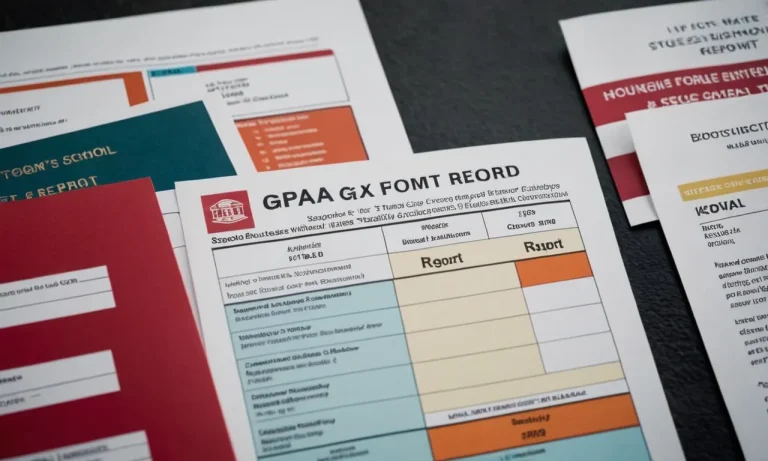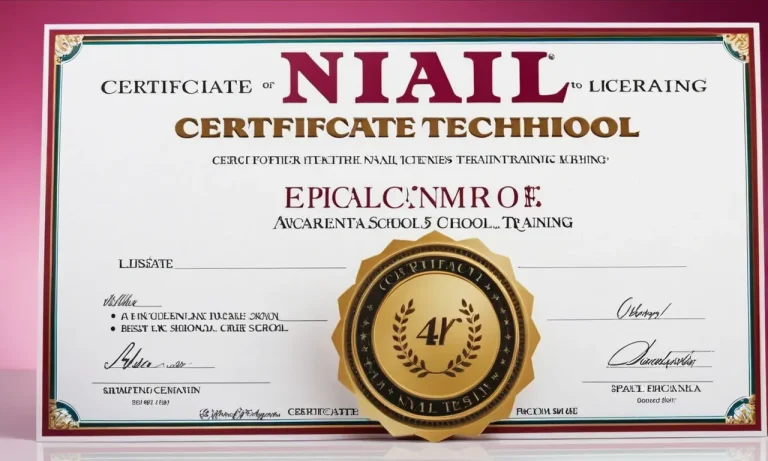The journey from high school athletics to college sports is a dream for many young athletes, but the reality is that only a small percentage make it to the next level. The competition is fierce, and the odds are stacked against them.
If you’re short on time, here’s a quick answer to your question: Only about 7% of high school athletes go on to play at the college level, according to the NCAA.
In this comprehensive article, we’ll delve into the statistics, explore the factors that influence an athlete’s chances of playing in college, and provide insights into the recruitment process. We’ll also discuss the benefits of participating in college sports and offer tips for high school athletes looking to increase their chances of being recruited.
The Numbers: Breaking Down the Percentage of High School Athletes Playing in College
Overall Statistics
The journey from high school athletics to collegiate sports is a dream for many young athletes, but the reality is that only a small percentage of them make it to the next level. According to the NCAA, approximately 480,000 student-athletes compete in NCAA sports each year, representing just a fraction of the millions of high school athletes across the nation.
The numbers can be staggering:
- Only about 7% of high school athletes go on to play at the NCAA level.
- Among the top high school recruits, around 57% will play at the NCAA Division I level.
- The chances of a high school athlete earning an NCAA Division I scholarship are a mere 2%.
Sport-Specific Breakdown
The odds of playing in college can vary significantly depending on the sport. For example, the chances of a high school baseball player competing at the NCAA level are around 6.6%, while for football, the percentage is slightly higher at 7.3%.
On the other hand, sports like men’s ice hockey (11.6%) and women’s basketball (3.6%) have different probabilities. It’s important to note that these statistics are based on data from the NCAA, and the chances may vary for non-NCAA collegiate programs.
| Sport | Percentage of High School Athletes Playing in College |
|---|---|
| Baseball | 6.6% |
| Football | 7.3% |
| Men’s Ice Hockey | 11.6% |
| Women’s Basketball | 3.6% |
Division I vs. Division II and III
The level of competition also plays a significant role in determining the chances of a high school athlete playing in college. NCAA Division I programs, which are typically the most competitive and offer the highest level of athletic scholarships, have a lower acceptance rate compared to Division II and Division III programs.
According to the NCAA, only about 2% of high school athletes go on to play at the Division I level, while 6.3% compete in Division II and 8.5% in Division III. It’s worth noting that while Division II and III programs may have higher acceptance rates, they often have different recruitment processes and scholarship opportunities.
Regardless of the statistics, the journey from high school to collegiate sports is a remarkable achievement that requires dedication, hard work, and a passion for the game. While the odds may seem daunting, the experiences and lessons learned through high school athletics can be invaluable, even for those who don’t pursue a collegiate athletic career.
Athletic Scholarships reminds us that “the value of high school sports extends far beyond the playing field, instilling discipline, teamwork, and a commitment to excellence that can benefit students in all aspects of life.” 😊
Factors Influencing an Athlete’s Chances of Playing in College
The journey from high school athletics to playing at the collegiate level is a challenging and competitive one. While many student-athletes aspire to continue their sports careers in college, only a fraction ultimately achieve this goal.
Several key factors play a crucial role in determining an athlete’s chances of making it to the next level.
Athletic Ability and Performance
Undoubtedly, an athlete’s skill level and performance on the field or court are among the most significant determinants of their chances of playing in college. College coaches are constantly on the lookout for talented individuals who can contribute to their teams’ success.
According to the NCAA, only about 7% of high school athletes go on to play at the NCAA level. This statistic highlights the intense competition and the high level of athletic ability required to secure a spot on a college team.
Academic Achievement
While athletic prowess is essential, academic performance is equally crucial for student-athletes aiming to play in college. College coaches and admissions officers evaluate not only an athlete’s sporting abilities but also their academic record.
According to the National Federation of State High School Associations, maintaining a strong GPA and performing well on standardized tests can significantly enhance an athlete’s chances of being recruited.
Many colleges have minimum academic requirements that student-athletes must meet to be eligible for recruitment.
Recruitment Process
The recruitment process is a crucial aspect that can make or break an athlete’s chances of playing in college. It involves various steps, including being scouted by college coaches, attending showcases and camps, creating highlight reels, and actively communicating with potential schools.
According to the NCAA, only about 2% of high school athletes are actively recruited by NCAA Division I schools. Effective self-promotion and proactive engagement with coaches can significantly improve an athlete’s visibility and chances of being recruited.
Financial Considerations
Financial considerations can also play a role in an athlete’s decision to pursue college athletics. While some student-athletes may receive athletic scholarships, these opportunities are limited, especially at the Division I level.
According to the Scholarship Stats website, only about 2% of high school athletes receive athletic scholarships at the Division I level. Athletes and their families must carefully evaluate the costs associated with attending college and explore various financial aid options, including academic and need-based scholarships.
Ultimately, the path to playing in college is a multifaceted journey that requires a combination of athletic talent, academic excellence, strategic recruitment efforts, and financial planning. By understanding and addressing these key factors, student-athletes can increase their chances of realizing their dreams of competing at the collegiate level.
Don’t let the odds discourage you – with hard work, dedication, and a well-rounded approach, you can beat the odds and become one of the few who make it to the next level! 👏🎉
The Recruitment Process: How College Coaches Evaluate and Recruit High School Athletes
The journey from high school athletics to college sports is an exciting yet challenging path, and the recruitment process plays a crucial role in determining where student-athletes will continue their athletic and academic careers.
College coaches employ various strategies to identify and evaluate talented high school athletes, making the recruitment process a comprehensive and competitive endeavor.
Scouting and Evaluation
Scouting is the cornerstone of the recruitment process. College coaches scour the nation, attending high school games, tournaments, and showcases to assess the skills, potential, and character of prospective athletes.
They meticulously analyze game footage, statistics, and academic records to gauge a player’s overall fit for their program. According to NCSA Sports, a reputable recruiting resource, coaches often rely on scouting services, networking with high school coaches, and attending elite camps to identify top prospects.
Recruiting Timelines
The timeline for recruitment varies across different sports and divisions. Many coaches begin evaluating athletes as early as their freshman or sophomore year of high school, especially in sports like basketball and football.
However, the NCAA has established specific recruiting periods and rules to ensure fairness and prevent exploitation. For example, NCAA recruiting calendars outline when coaches can contact, evaluate, and extend offers to prospective student-athletes.
Building a Recruitment Profile
To stand out in the competitive recruitment landscape, high school athletes must proactively build a strong recruitment profile. This includes maintaining impressive academic performance, participating in camps and showcases, creating highlight videos, and utilizing online recruiting platforms like BeRecruited.
A well-rounded profile showcases not only athletic prowess but also character, leadership, and academic commitment – factors that coaches highly value.
The Role of Highlight Videos and Camps
Highlight videos have become an indispensable tool in the recruitment process. They provide coaches with a concise visual representation of an athlete’s skills, allowing them to quickly assess potential.
According to NCAA statistics, over 90% of coaches consider highlight videos crucial in their evaluation process. Similarly, attending elite camps and showcases offers athletes the opportunity to showcase their talents directly in front of college coaches and gain valuable exposure.
The recruitment process is a delicate dance between high school athletes, coaches, and college programs. By understanding the evaluation criteria, timelines, and strategies employed by coaches, student-athletes can navigate this journey with greater confidence and increase their chances of securing a coveted spot on a college team.
With hard work, dedication, and a well-rounded approach, the dream of playing at the collegiate level can become a reality for many aspiring athletes.
The Benefits of Playing College Sports: Beyond the Field
Participating in college sports offers a myriad of advantages that extend far beyond the playing field. While the physical and competitive aspects are undoubtedly significant, the benefits of being a student-athlete encompass academic, personal, and professional realms.
Let’s explore these invaluable opportunities.
Academic Support and Resources
College athletic programs are designed to support student-athletes in their academic pursuits. Many universities provide dedicated academic advisors, tutoring services, and study halls tailored to the unique demands of balancing academics and athletics.
According to the NCAA, over 90% of student-athletes receive academic support services from their institutions. This invaluable support system helps athletes maintain their academic eligibility and progress toward graduation.
Personal Growth and Development
Participating in college sports fosters invaluable life skills that transcend the playing field. Student-athletes learn discipline, time management, teamwork, leadership, and resilience – qualities that are highly sought after in any professional setting.
Through the challenges and triumphs of their athletic endeavors, they develop a strong work ethic, mental toughness, and the ability to handle pressure. These personal growth experiences shape well-rounded individuals who are better equipped to navigate life’s complexities.
Networking Opportunities
College sports provide a rich networking environment that can open doors to future professional opportunities. Student-athletes have the chance to connect with coaches, mentors, alumni, and professionals within their respective sports communities.
These connections can lead to internships, job opportunities, or valuable industry insights. Furthermore, being part of a college athletic program instills a sense of camaraderie and belonging, creating lifelong bonds and a supportive network that extends beyond their collegiate years.
Potential for Athletic Scholarships
For many student-athletes, the opportunity to receive an athletic scholarship is a game-changer. According to the NCSA, over 180,000 student-athletes receive athletic scholarships each year, with an average value of $18,000 per year.
These scholarships can significantly reduce the financial burden of pursuing higher education, allowing student-athletes to focus on their academic and athletic goals without the added stress of financial constraints.
Conclusion
While the percentage of high school athletes who go on to play in college may seem low, the journey itself is a rewarding experience that can shape an individual’s character, work ethic, and future success.
For those who have the talent, dedication, and determination to pursue college athletics, the rewards can be immense.
By understanding the factors that influence an athlete’s chances of being recruited, navigating the recruitment process effectively, and leveraging the resources and support available, high school athletes can increase their odds of achieving their dreams of playing at the collegiate level.
Ultimately, the pursuit of college athletics is a testament to the passion, resilience, and commitment of these young athletes, and their journey serves as an inspiration to others.






